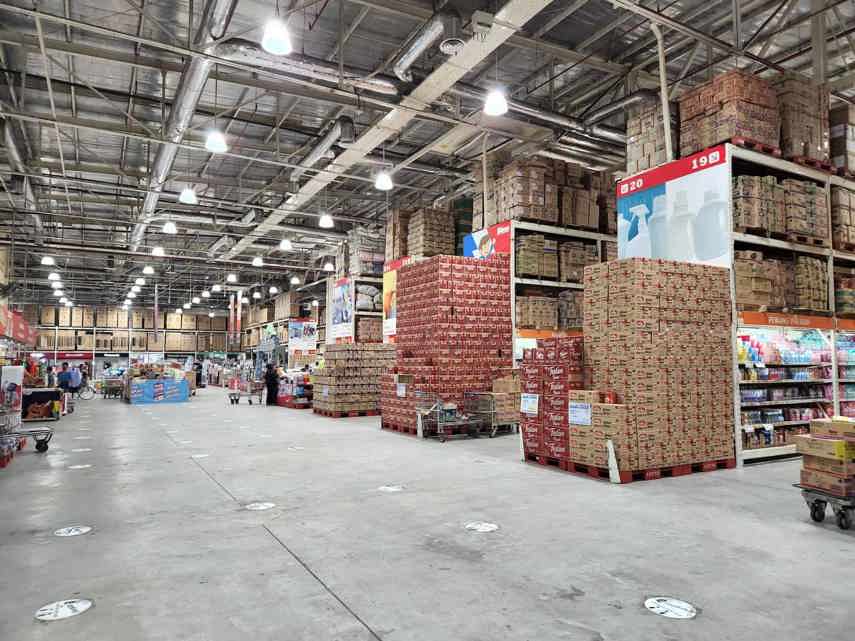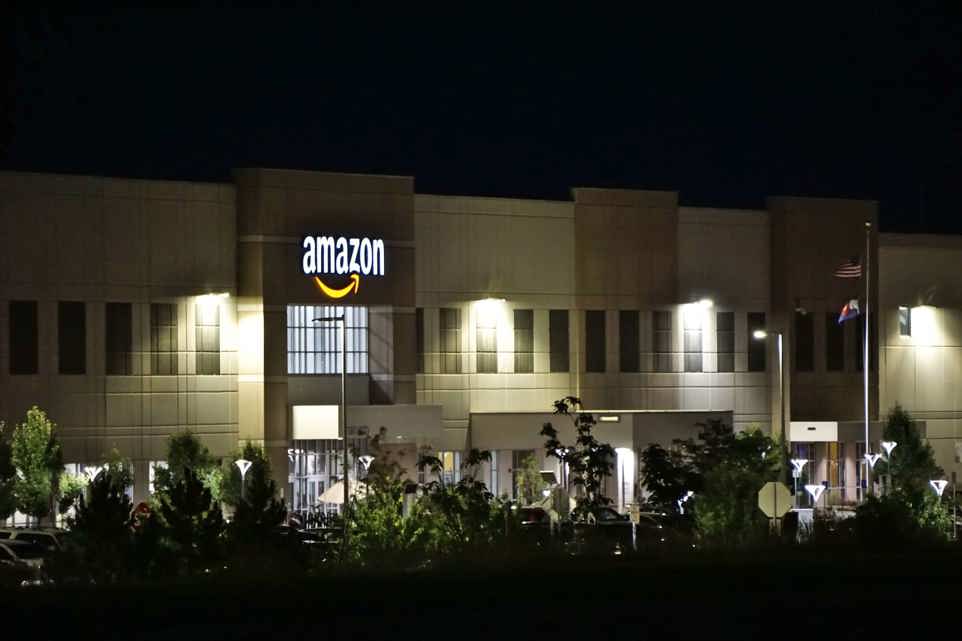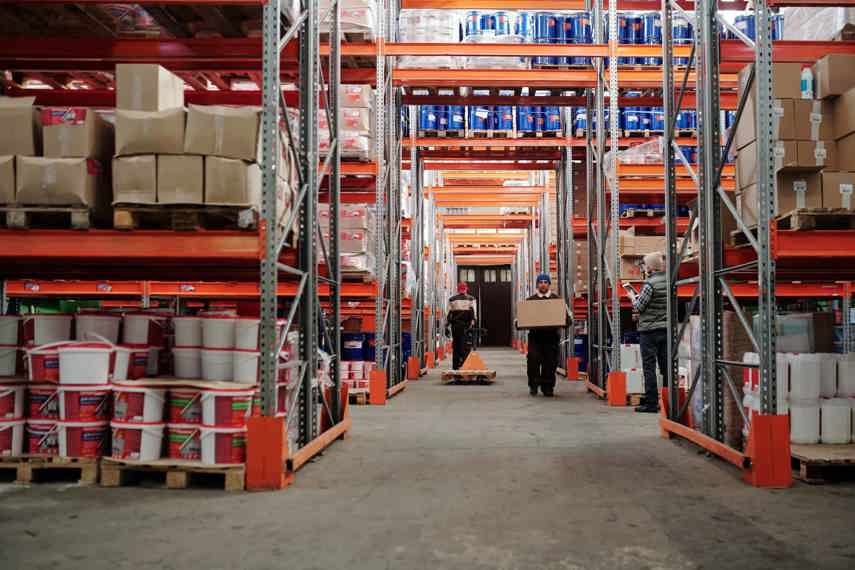
As the world’s largest eCommerce platform, Amazon offers a huge opportunity to build or create a business. But navigating this enormous and multi-faceted marketplace can be challenging, especially without prior knowledge or experience.
This guide outlines how to set up an Amazon wholesaling business from scratch, including how to source products, manage stock, and grow your store.
In this guide to Amazon wholesaling:
What is Amazon wholesaling?
Amazon wholesaling is a business model in which products are purchased in bulk, directly from the distributor or manufacturer, and then sold through the Amazon platform to customers at a higher price.
According to Amazon, over half of the units sold through the site are from independent sellers. However, given the massive number of sales taking place every second, getting cut through can be difficult.
How does Amazon wholesaling work?
Amazon wholesaling works by purchasing existing branded products in bulk quantities and reselling them through the Amazon marketplace.
Creating a successful Amazon wholesaling business requires certain attributes and skills. These include building relationships with suppliers, being able to offer a unique selling proposition, applying effective product marketing, and identifying the perfect price point for maximum profit.
 Amazon wholesaling can be a lucrative business model, but requires some skill-learning and a willingness to do more than the competition.
Amazon wholesaling can be a lucrative business model, but requires some skill-learning and a willingness to do more than the competition.
Benefits of Amazon wholesaling
Amazon is the biggest online retailer in the world. It provides a huge customer base and a market for potential buyers. It is also well-designed and set up for wholesalers to list and sell their products.
The key benefits of Amazon wholesaling include:
- Huge reach. Amazon has over 300 million active customer accounts and nearly 2 million selling partners around the world. Its B2B arm, Amazon Business has more than a million customer accounts and over 150,000 sellers. That’s a big pool of potential customers for any Amazon merchant.
- Marketing tools. Amazon provides a range of marketing tools, including sponsored products, to help wholesalers reach customers. The Amazon Seller app, for example, allows business to be conducted from a mobile divide and is particularly useful for those who are building a business while also juggling other responsibilities.
- Fulfilment options. Amazon offers various fulfilment services such as Fulfilled by Amazon (FBA)which can help wholesalers get their products to customers faster.
- Data insights. Amazon provides detailed data on customer behaviour and preferences, which can help wholesalers make informed business decisions.
Amazon averages $1.3 billion in daily sales, and ships out more than 60,000 products per hour. As such, it can be difficult to get seen – but immensely beneficial if you do.
Disadvantages of Amazon wholesaling
Amazon is a highly competitive platform, which means you’re likely to find serious competition in almost every category.
Other disadvantages include:
- Amazon charges fees for using its professional accounts and services. It is important to ensure your pricing model takes these costs into account and still delivers a healthy profit.
- Over-reliance. It can be easy to become overly reliant on Amazon as a platform given its size and clout. However, this can be challenging if it changes its offering or policies.
- Brand control. Selling through Amazon means the platform can control many aspects of the customer experience. It also allows it to leverage its algorithms in a way that may disadvantage your business.
How does Amazon wholesaling differ from other selling models?
Amazon’s greatest appeal is its massive reach and access to a global market. It’s impossible to match the sales potential if you’re only selling through a brick-and-mortar store, and much more difficult with other e-commerce platforms.
Apart from this clear distinction, there are other points of difference including its sophisticated tools across fulfilment, data insights and marketing. Again, its massive existing reach means these tools can be far more effective than those on other e-commerce sites.
However, there are other differences which are not necessarily beneficial for wholesalers, including Amazon’s control of the customer experience and its high selling fees.
 Amazon wholesaling offers greater sales potential than other platforms but comes with higher selling fees.
Amazon wholesaling offers greater sales potential than other platforms but comes with higher selling fees.
How to sell wholesale on Amazon
Setting up a wholesale seller account on Amazon starts with creating the seller account and providing all the information required, including tax and payment details.
Step 1: Establish a seller’s account
Amazon offers different types of seller accounts depending on what is required:
- Individual accounts are for those who sell less than 40 items a month.
- Professional accounts are for those who sell more.
Professional accounts also give access to APIs and other sales and growth tools.
You will need to register with certain information, including your personal details, bank account, credit card details, and tax information. You may be required to get some form of business license if you are buying products tax-free then on-selling, and thus collecting tax on behalf of the relevant jurisdiction.
Once you’re a registered seller, you’ll have access to a Seller Central account.
This is your portal for the site, and the central place to view inventory and payments. It also allows you to create business reports, draw on customer metrics, and access Amazon support services.
Step 2: Find winning products
You may want to sell within an existing market or offer a product in an area where you believe there is an untapped opportunity.
Here are a few tips for conducting product research:
- Explore the biggest markets on Amazon. They include homeware, clothing, electronics, and beauty products. It will then be worth exploring other areas where you wish to sell and see how and what products are already in the market.
- Utilise data tools. Keyword search tools like SellerApp can be used to dig into the analytics around products, including the level of demand, and whether there is further opportunity. There are also Chrome extension tools such as Unicorn Smasher which show prices, rankings, estimated sales and performance over time.
- Perform manual searches on Amazon. Search through Amazon for particular products you have expertise in or can offer a version of a particular product with a point of difference - such as at a lower price point or fair-trade endorsement.
- Analyse the likely profit. Generally, this can be broken up into three categories: ‘landed costs’, the cost of manufacturing and shipping your product to a warehouse; ‘fees’, the costs associated with the listing including Amazon’s commission; and the profit you will be able to make.
The focus for all your research should be to either find a gap in the market or a way in which your product will stand out from others.
For example, if a product type has high sales volume but a lot of negative reviews there may be room to improve on what’s already out there. In this case, the gap in the market isn’t the product itself, but a higher-quality version of an existing product.
Step 3: Source Amazon wholesaling suppliers
Finding reliable, well-priced and reputable wholesale suppliers for an Amazon wholesale market is key to a successful business.
Here are a few ways to find reliable suppliers:
- Do due diligence on the potential suppliers. Once you have a shortlist of suppliers, check their credentials, including any reviews, licences and customer references to assess their suitability.
- Negotiate costs, fees, and delivery prices. Ask about the ability to get bonus stock or discounts for bulk purchases.
- Trial new suppliers before committing to long-term contracts. Run a test, with a small amount of product, to see how well the supplier performs and responds if there are any issues.
- Measure their value. Regularly audit supplier performance and continue to research the market in case better options or partnerships become available.
Step 4: List your product on Amazon
Once you have identified what products to sell, you will need to list them on Amazon.
There are certain steps prior that are useful before you do this:
1. Decide which business model you intend to use
You can sell as a sole trader under your own name, or you can set up a company and sell through that. The latter model is usually followed when the business has gotten bigger and might be employing staff, for example.
It is best to get advice from a lawyer and/or an accountant on how best to structure your business before you start selling products as there are pros and cons to both.
2. Consider the different account types
If you are selling under a professional account, you will then have the option to sell products in various ways, such as in bulk, or through third parties. If you are selling as an individual, these options are not available.
3. Research all the tools available to you within the Amazon model
The platform offers five selling tools. These are called Brand Registry, Fulfilment, A+ Content, Automated Pricing, and Advertising.
It also offers online support including what it calls the ‘Perfect Launch’, using the tools to maximise sales within the vitally important first 90 days.
4. Create product listings
Once you have established how you intend to launch, you need to create product listings.
These should include the following details:
- the product’s UPC
- the product ID or SKU
- basic details such as price, shopping, and availability
- product detail like brand, description, and images
- keywords to help surface the product to consumers searching for it
Step 5: Optimise sales with inventory management software
If you’re carrying physical stock, such as books or gloves, you’ll also need to invest in a robust wholesale inventory management system like Unleashed. This will allow you to easily track and manage your stock across a single location or multiple warehouses, making it ideal for scaling.
eCommerce inventory management software will also centralise all your sales order and logistics processes, so you never oversell or undersell a product.
Some tools feature advanced reporting functionality that tells you exactly how much stock to reorder and when for each SKU. This is ideal for protecting your cash flow and avoiding spoilage and shrinkage.
- You can learn more about integrating with Amazon inventory management software here.
 eCommerce inventory management is a core element of successful Amazon wholesaling.
eCommerce inventory management is a core element of successful Amazon wholesaling.
How to market your Amazon wholesaling business
Once you’ve set up your store and added some products, the next step is to get them in front of the right audience.
There are a million-and-one ways to market an Amazon product.
Here are some tips to help you get started:
- Optimise your product listings. Amazon lists the details of product listing requirements here. They include particular dimensions for the images, a description designed to appeal to customers, and keywords that are picked up in search.
- Become eligible for an Amazon ‘Buy Box’. These are small boxes with all the product details and calls to action like a ‘Buy Now’ button. Merchants who are the most competitive or successful sellers are rewarded by being given access to an Amazon Buy Box.
To win one, you need to offer competitive pricing (including shipping), excellent customer service and delivery and optimise your stock management. It is certainly worth doing this as the Buy Box enables the use of other tools such as Amazon PPC (pay-per-click) marketing campaigns. The vast majority of sales also come through the Buy Box widget.
- Use the full suite of Amazon marketing tools. Beyond the Buy Box, Amazon offers excellent marketing tools and support, including Business Prime, which is a membership programme designed specifically for Amazon merchants. This offers benefits including free shipping on certain products, analytics around your company’s spend, and the ability to guide customers toward certain products.
- Build relationships with major customers and strategies which target each one’s needs. This may include offering promotions or discounts for long-term or bulk purchasing arrangements. Respond promptly to any customer inquiries, feedback, or concerns.
- Invest in Search Engine Optimisation. Ensure you follow SEO best practices to surface your product in Google searches. This can take some time to develop but the ultimate aim will be to increase visibility and attract organic traffic.
Lastly, you should monitor and analyse your sales data to ensure your business is performing as effectively as it can. This data can also be used to support ongoing business decisions.
 Growing your Amazon wholesaling business comes down to effective marketing, optimised listings, and a good understanding of your customer.
Growing your Amazon wholesaling business comes down to effective marketing, optimised listings, and a good understanding of your customer.
Amazon wholesaling trends in 2024
The COVID-19 pandemic prompted a massive shift to the already-booming e-commerce sector. Despite being hit by supply chain glitches, Amazon benefitted hugely from this change in consumer patterns.
This trend is likely to continue through 2024, as Amazon’s e-commerce reach becomes even greater. It is also likely to benefit from the increased use of data and customer personalisation, given its incomparable collection of datasets.
Customer demand for sustainability is another trend likely to accelerate in 2024. The impact of climate change is becoming clear as once-in-100-years weather events hit countries around the world. Customers will respond by demanding sustainable, eco-friendly products and supply chains.
Rapid advancements in technology will also be a trend in 2024. Automation, artificial intelligence, and machine learning will be key to personalising customers’ experiences.
Businesses that wish to stay ahead of these advances will invest in technology - and likely be rewarded by increased sales and customer satisfaction.
